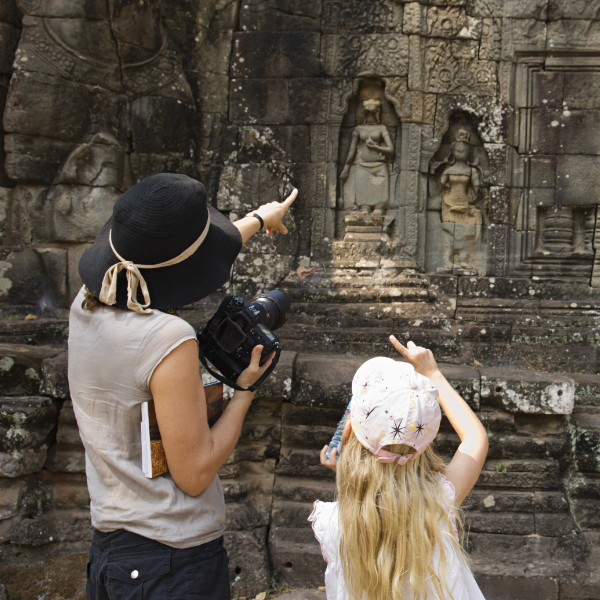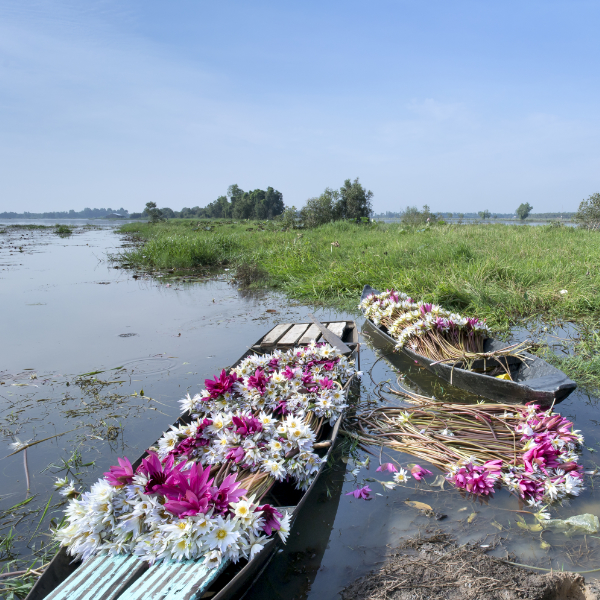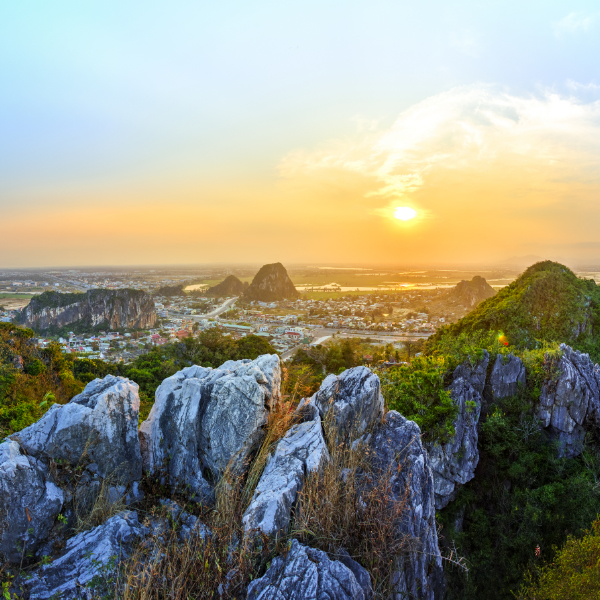Although in many countries of the Southeast Asian region, construction, illegal logging and poaching continue to cause persistent problems in the drive to preserve wildlife habitat, in Cambodia these problems are extremely serious and even many ‘protected’ areas can shockingly often show signs of considerable scarring.
This situation is further compounded by the government, which despite its ecological pledges, continues to offer dubious land concessions within their boundaries, an example of which was the sale of an area Botum Sakor National Park, home to many of Cambodia’s most endangered species, to Chinese Developers, who have transformed the area into a city-sized gambling resort. Together with other concessions and compounded by criminal activities, this former jewel is almost entirely ruined.
One of the most untouched wilderness areas remaining in Cambodia is the evergreen rainforest of the Cardamom Mountains National Park, with Sun Bears, Tigers, Clouded Leopards, Pileated Gibbons and Pangolins among the more illustrious inhabitants to wander its forests, whilst overhead some 450 species of bird can be found. Fishing Cats can be found along the banks of Cardamom rivers, within which Irrawaddy and humpback dolphins can be found swimming along with Siamese Crocodiles.
An innovative project at Chi Pat, in the southern Cardamoms has harnessed the profound knowledge of former poachers into first class wildlife guides and transformed the local economy into a profoundly successful ecotourism destination.
Another area of wilderness, in the far northeast and straddling the borders of Laos and Vietnam, Virachey National Park is a variegated terrain of mountain, upland savannah and dense forest, and is likewise home to some rare wildlife, but the rarest species are seldom seen on most of the trails in the area, some of which can last up to 8 days.
In Eastern Cambodia, the Phnom Prich and Lumphat Wildlife Sanctuaries offer a refuge to Cambodia’s struggling wildlife, where you can do some wildlife-spotting elephant treks. The Gibbon Project at Ban Lung offers a trekking experience to encounter a recently discovered yellow-cheeked Gibbon colony.
The easiest place to view Cambodia’s endangered species is by visiting one of Cambodia’s rescue centres. Phnom Tamao Wildlife Sanctuary importantly gives a home to animals rescued from poachers and abusive owners and, wherever possible, returned to the wild. Occupying a space between zoo and safari park, Tigers, Sun Bears, Gibbons, Macaques, Elephants, Crocodiles and deer can be seen, along with a large aviary.
Likewise, the Observation Area of the Cambodian Wildlife Sanctuary at Angkor provides an opportunity to see many of these iconic species. Although no substitute for viewing these creatures in the wild, the enclosures are at least sensitively designed to replicate the natural habitats.
OTHER Cambodia TOURS
Classic Cambodia 5 Days
This 5 day tour gives provides a thorough in-depth exploration of the ancient Angkor Empire, from its earliest structures, through to the pinnacle of its wondrous architectural, engineering and cultural achievements, The tour also explores the country’s capital, Phnom Penh and the more recent, less worthy, history of the Khmer Rouge era.
Cambodia Heritage and Beach 8 Days
This 8 day tour is in many ways a microcosm of Human existence from the pinnacles of human endeavour in the exalted civilisation of Angkor, to the abhorrent aberration of human depravity of Pol Pot and his brutally insane regime of the 1970’s and finding resolution in the lives of modern day Cambodia and some reflective relaxation on the beaches of Sihanoukville.
Phnom Penh Stopover 3 Days
Explore the fast-developing
city of Phnom Penh, seeing its history from the ancient to the relatively
modern in pagodas and museums. Taste village life on a Mekong River island,
enjoy traditional Khmer dance, and sit back to process it all at the storied FCC
Cambodia.
Siem Reap Stopover 3 Days
Tour the world-renowned temple Angkor Wat, as well
as exploring numerous other ancient temples and sites remaining from Angkor’s
glory days, and take a boat tour to a floating fishing village on Tonle Sap
Lake.
Cambodia Explorer 4 Days
Packed with sightseeing detail, this short 4 day trip to Cambodia includes a guided tour of Phnom Penh, 2 days exploring the astounding UNESCO World Heritage ancient Hindu archaeological treasures of Angkor, and a trip upon unique Tonle Sap Lake. Ideal as an extension to tours of neighbouring countries, or as a stopover detour for travellers visiting elsewhere in Southeast Asia who do not wish to miss out on the opportunity to see the magnificence of the region’s most significant ancient culture.
Khmer Empire Explorer 4 Days
This short 4 Day tour is designed for those whose primary reason to visit Cambodia is to experience the UNESCO World Heritage Site at Angkor. Ideal as a stopover diversion from one of the regions hub airports or as an addition to a tour of neighbouring countries. An interesting alternative to a flight arrival is possible by travelling to Siem Reap from Vietnam aboard a Mekong River cruise, which can also usefully be accomplished in reverse.
Cruising the Lower Mekong River 9 days
This 9 day cruise of the waterways of the lower Mekong River, journeying from My Tho in Vietnam upriver to Phnom Penh in Cambodia and the area of Kampong Cham, before heading into Tonle Sap River and its vast lake, and culminating at Siem Reap. An excellent leisurely cruise in its own right, it also provides a relaxing and novel alternative to air travel to visit Angkor Wat.
Cambodia Heritage and Adventure 10 days
This 10 Day tour of Cambodia begins with an exploration of the ancient site of Angkor, and a bird-watching visit to nearby Tonle Sap Lake. The tour then travels on to the capital city, Phnom Penh, before a journey into the forest of the Cardamom Mountains and Koh Kong, for some biking and trekking.
Cambodia Honeymoon Delight 8 Days
On this honeymoon tour in Cambodia you’ll set
out together to explore the fabulously atmospheric temples of Angkor, taking in
the awesome grandeur of Angkor Wat and the picturesque, jungle-clad ruins of Ta
Prohm and Beng Melea, and then sink your toes into the sands of Song Saa
Private Island resort just off Cambodia’s coast. An exclusive experience
melding local roots with world class luxury, your time on Song Saa is sure to
provide honeymoon memories to last a lifetime.
Cambodia Quiet Beach 5 Days
In days gone by,
Cambodia’s elite flocked to Kep to enjoy its coastline. Today, while
overshadowed in glamour by nearby Sihanoukville, Kep remains a rustic beach
spot well known for its oceanfront crab shacks. Apart from enjoying the crabs,
you can explore Kep National Park for panoramic views, or head out to one of nearby
islands. This itinerary is set up as an extension after touring the Angkor
temples around Siem Reap.
Koh Rong Sanloem Island 5 Days
Koh Rong Sanloem Island off the coast from
Sihanoukville, Cambodia offers an ideal escape from both the hectic pace of daily
life and the harried rush found in more oft-visited tourism destinations. Here,
you find a true tropical island getaway, with bungalows on a private beach
providing the ideal environment for profound relaxation. This itinerary is set
up as an extension after touring the Angkor temples around Siem Reap.
Cambodia’s Beach Retreat 5 Days
A relative newcomer to tourism, Sihanoukville is
a young city built in the 1950s to serve Cambodia’s sole deep-water port. Head
east from the city centre and you’ll find four remarkable beaches, separated by
rocky promontories featuring stunning coastal views, offering an ideal location
for total relaxation. This itinerary is set up as an extension after touring
the Angkor temples around Siem Reap, and returns to the capital Phnom Penh.
Summer holiday in Asia 12 Days
Spanning
the width of Mainland Southeast Asia, this tour takes you from burgeoning urban
centres to ancient monuments to quiet rural retreats. In Thailand, take in the
gilded sights of Bangkok, visit the famed ‘Bridge over the River Kwai’ and
enjoy the company of gentle giants at an elephant nature park. View the
architectural wonders of Angkor Wat and other ancient Khmer temples near Siem
Reap, Cambodia. In Vietnam, take a day to cruise the Mekong River and
experience life on the delta, including a short cycling excursion and a rowing
boat tour of the area’s labyrinthine canals. In the picturesque Central Vietnam
town of Hoi An, enjoy the beach, join a cooking class or simply sit back and
take it all in.
Custom 5
In contrast to the other tours featured on this website, this tour of Vietnam and Cambodia is not a standard template but an actual finalised holiday itinerary taken by one of our clients and featured in our Customer Reviews section.

Custom family holiday in Vietnam and Cambodia
From the iconic islands of Halong Bay in Vietnam to the fabled
halls of Cambodia’s Angkor Wat, this tour gives you the time to enjoy
yourself. Explore Hanoi’s bustling Old Quarter and try its famed street
food. Cruise the rugged majesty of Halong Bay. Wander the halls of past
kings in the former royal capital city of Hue. Settle into the quaint
old town of Hoi An and get to know the locals. Move next door to
Cambodia and explore the wonders of the Angkor temples, then take an
impeccably located beach break on Phu Quoc Island. Finally, see the
sights of Ho Chi Minh City, Vietnam’s most cosmopolitan and energetic
urban centre. With so much to see and do, this tour delivers an
experience you won’t forget.
Feedback from the client for whom we designed this tour:
“I just want to express our happiness with your company’s
service for our tour of Vietnam and Cambodia. We were so glad to use
your service for our memorable trip of a life time. We will recommend
it to our friends as well. I think the selections of the hotels and
restaurants for our food was amazing. The hospitality of the tour
guides were awesome. I will call out especially to Ms. Lan and Ms.
Hien. They made sure we were taken care of every step of the way,
especially paying attention to the allergic food items for our son…”
“Overall, it was a great experience for our family and we can’t
wait to share our experience with our friends and family. Thank you
Haivenu for a wonderful experience.”

Custom Southern Vietnam and Cambodia
From the bustling streets of Vietnam’s metropolitan Ho Chi Minh City, make your way up the Mekong Delta, exploring the floating markets, islands and cultural riches of this riverine society. Entering Cambodia, see the sights of the capital city Phnom Penh, then fly to Siem Reap and spend several days taking in the wonders of the incredible Temples of Angkor and the nearby Tonle Sap Lake.
Feedback from the client for whom we designed this tour:
“They were excellent! They took all the work out of planning where to go and what to see. The Hotels and restaurants chosen were all to our taste and we enjoyed the trip in Vietnam and the boat trip over the border to Cambodia. Would recommend Son and his team to anyone.”
“Unfortunately there happened to be a typhoon follow us on Christmas day but everything was handled with care and professionalism. We missed the floating market due to this but we were happy to be safe.”
“…excellent from start to finish. We would never have got to see half the places we saw without this arranged tour!”

Custom Vietnam and Cambodia Cuisine
Bringing you the tastes and sights of destinations along the entire length of Vietnam, as well as the highlights of Cambodia, this tour packs a lot of flavour into just 12 days. From fresh seafood aboard your Halong Bay cruise, to Hanoi’s famed street food stalls, to sidewalk snacks on the charming streets of Hoi An, to local flavours reached by Vespa tour in Saigon and the mouth-wateringly luxuriant orchards of the Mekong Delta, there is much in store for you here. In Cambodia, explore the magnificent wonder of the Temples of Angkor, as well as the capital city Phnom Penh. Designed to please your palate and provide a fascinating glimpse of life and culture in Vietnam and Cambodia, if you love to explore new flavours and places, this is just the trip for you.
Feedback from the client for whom we designed this tour:
Our travel coordinator gave us a trip of a lifetime through Vietnam and Cambodia. Thorough, accommodating, responsive, attention to details - the consummate professional.
We hit every highlight on our bucket list. And when I wanted to change something our agent responded immediately.
As restaurateurs, the food and restaurant choices were the highlight of our trip.
All our visas were arranged, guides and transportation waited us on every arrival; our guides were delightful and we were often sad to leave them.
I only wished we had longer in Vietnam that we just LOVED.
Kudos for a top notch job - on all accounts.

Custom holiday in Vietnam and Cambodia
With two and a half weeks to explore, this tour gives you a broad perspective on Vietnam and Cambodia. Immerse yourself in the historic yet vibrantly commercial Hanoi Old Quarter and the pulsing energy of Ho Chi Minh City. Step into the traditional pace of life on the charming riverside streets of ancient Hoi An, the Red River Delta’s craft villages, and the soothing rhythm of an ox-cart ride into the Cambodian countryside. Explore the towers of Angkor Wat and the jungle-clad walls of Ta Prohm; and the monuments of imperial Vietnam in Hue, artfully blending architectural genius with natural beauty. Enjoy performances of living traditions like Vietnam’s endearing water puppets, traditional Quan Ho music, and Cambodian circus arts. Bask in natural splendour on a Mekong River cruise, the rugged terrain of Central Vietnam’s Son Tra Peninsula and Hai Van Pass, and breath-taking vistas of Halong Bay. Make the choice; create the memory.
Feedback from the client for whom we designed this tour:
“From the start to the finish, Haivenu Tours Ltd. did a marvellous job.”
“The four of us, two couples, had lots of ideas and questions about the trip. Our representative, Thanh Ha, was wonderful.”
"Our guides were fabulous… did everything and more to make sure we had the experiences we wanted."
"They were friendly, helpful, caring and fun. Wonderful service."
"All of our drivers were excellent, friendly and helpful. They always had bottles of cold water for us when we returned to the vans, which was much appreciated."
"Our hotels were perfect. The Hanoi de l'Opera in Hanoi, our private boat the Bhaya Legend in Ha Long Bay and the staff on board, the Premier Indochine Palace in Hue, the Boutique Hoi An in Hoi An where we had a wonderful 2 day rest period to enjoy the beach and relax, the Reverie Saigon which was luxury at its best, and the Shinta Mani Angkor in Siem Reap, Cambodia, were the perfect places to relax, rest and explore after our days of seeing the sights. They all had wonderful breakfasts and the staff of all of them were friendly, helpful and informative when we needed some advice."
"I highly recommend Haivenu Tours for any trip you are planning to Vietnam. Their service was outstanding and we have no complaints about anything they booked, recommended or suggested."
Family activities in Indochina (16 Days)
This
remarkable 16 day family sojourn of Indochina begins in Luang Prabang, the
beautiful former capital of Laos, exploring its picturesque sights, before
journeying south to explore the ancient magnificence of Cambodia’s Angkor
Empire and travelling on to Vietnam, visiting Saigon, the Mekong Delta, Hanoi
and cruising Halong’s stunning neighbour, Bai Tu Long Bay. The tour also has an
emphasis on understanding local people and their traditions along the way.